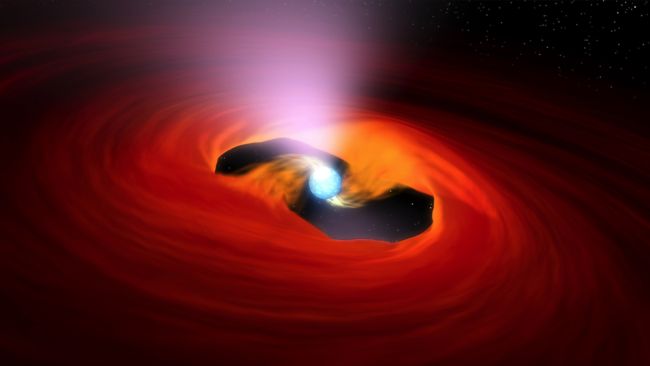Observing outburst onset in a low-mass X-ray binary
 SAX J1808.4—3658 is the first accretion-powered millisecond pulsar
ever discovered, and still one of the best-studied, thanks to a quasi-regular
series of outbursts since 1996.
Based on the regularity of the outbursts, I'd predicted that it would return
to activity in 2019 May. This prediction was a bit off, as it turned
out, since we didn't hear a peep out of it until late July in the same year.
Even so, thanks to the prediction and a series of optical and X-ray
observations led by Monash PhD student Adelle Goodwin, we gathered data giving
a view of the outburst onset of unprecedented detail.
SAX J1808.4—3658 is the first accretion-powered millisecond pulsar
ever discovered, and still one of the best-studied, thanks to a quasi-regular
series of outbursts since 1996.
Based on the regularity of the outbursts, I'd predicted that it would return
to activity in 2019 May. This prediction was a bit off, as it turned
out, since we didn't hear a peep out of it until late July in the same year.
Even so, thanks to the prediction and a series of optical and X-ray
observations led by Monash PhD student Adelle Goodwin, we gathered data giving
a view of the outburst onset of unprecedented detail.
Adelle presented her work at the 236th AAS meeting last week, and also took part in a press event the same day. Our press release got picked up and distributed widely, at space.com, Science Daily,, phys.org,, CNET and even Nine news. Adelle also appeared on RRR's Einstein-a-go-go show and was interviewed by a number of other outlets.
On the science side, the unexpectedly long delay of 12d between the optical and X-ray activity may have implications for the most widely-accepted model which explains how these outbursts are triggered. Adelle's paper on the study has been submitted to MNRAS.
And the next outburst? You'll have to wait until 2023 November — or perhaps even later.
Read the paper arXiv:2006.02872




